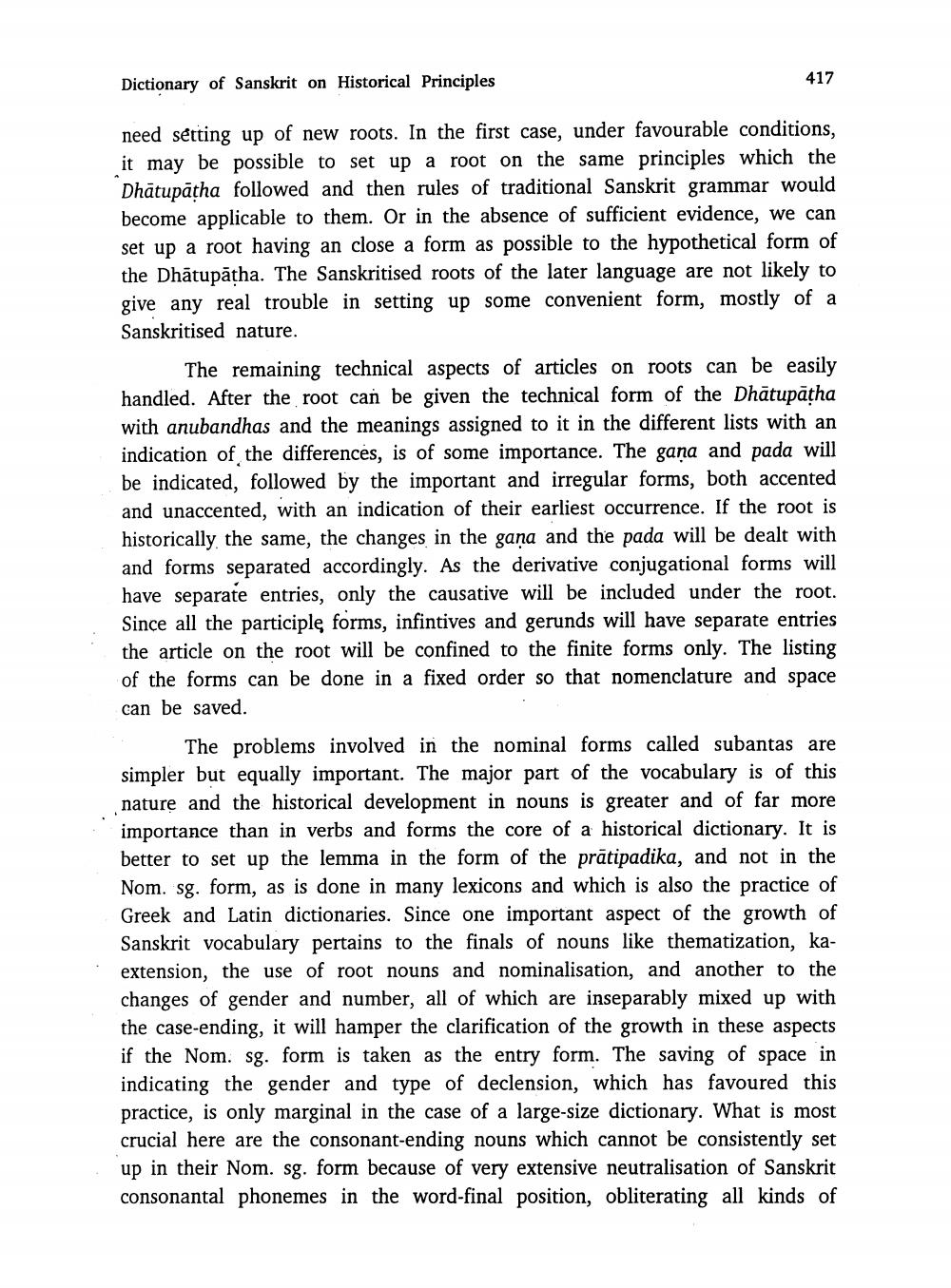________________
Dictionary of Sanskrit on Historical Principles
417
need setting up of new roots. In the first case, under favourable conditions, it may be possible to set up a root on the same principles which the
pātha followed and then rules of traditional Sanskrit grammar would become applicable to them. Or in the absence of sufficient evidence, we can set up a root having an close a form as possible to the hypothetical form of the Dhātupātha. The Sanskritised roots of the later language are not likely to give any real trouble in setting up some convenient form, mostly of a Sanskritised nature.
The remaining technical aspects of articles on roots can be easily handled. After the root can be given the technical form of the Dhātupātha with anubandhas and the meanings assigned to it in the different lists with an indication of the differences, is of some importance. The gana and pada will be indicated, followed by the important and irregular forms, both accented and unaccented, with an indication of their earliest occurrence. If the root is historically the same, the changes in the gana and the pada will be dealt with and forms separated accordingly. As the derivative conjugational forms will have separate entries, only the causative will be included under the root. Since all the participle forms, infintives and gerunds will have separate entries the article on the root will be confined to the finite forms only. The listing of the forms can be done in a fixed order so that nomenclature and space can be saved.
The problems involved in the nominal forms called subantas are simpler but equally important. The major part of the vocabulary is of this nature and the historical development in nouns is greater and of far more importance than in verbs and forms the core of a historical dictionary. It is better to set up the lemma in the form of the prātipadika, and not in the Nom. sg. form, as is done in many lexicons and which is also the practice of Greek and Latin dictionaries. Since one important aspect of the growth of Sanskrit vocabulary pertains to the finals of nouns like thematization, kaextension, the use of root nouns and nominalisation, and another to the changes of gender and number, all of which are inseparably mixed up with the case-ending, it will hamper the clarification of the growth in these aspects if the Nom. sg. form is taken as the entry form. The saving of space in indicating the gender and type of declension, which has favoured this practice, is only marginal in the case of a large-size dictionary. What is most crucial here are the consonant-ending nouns which cannot be consistently set up in their Nom. sg. form because of very extensive neutralisation of Sanskrit consonantal phonemes in the word-final position, obliterating all kinds of




